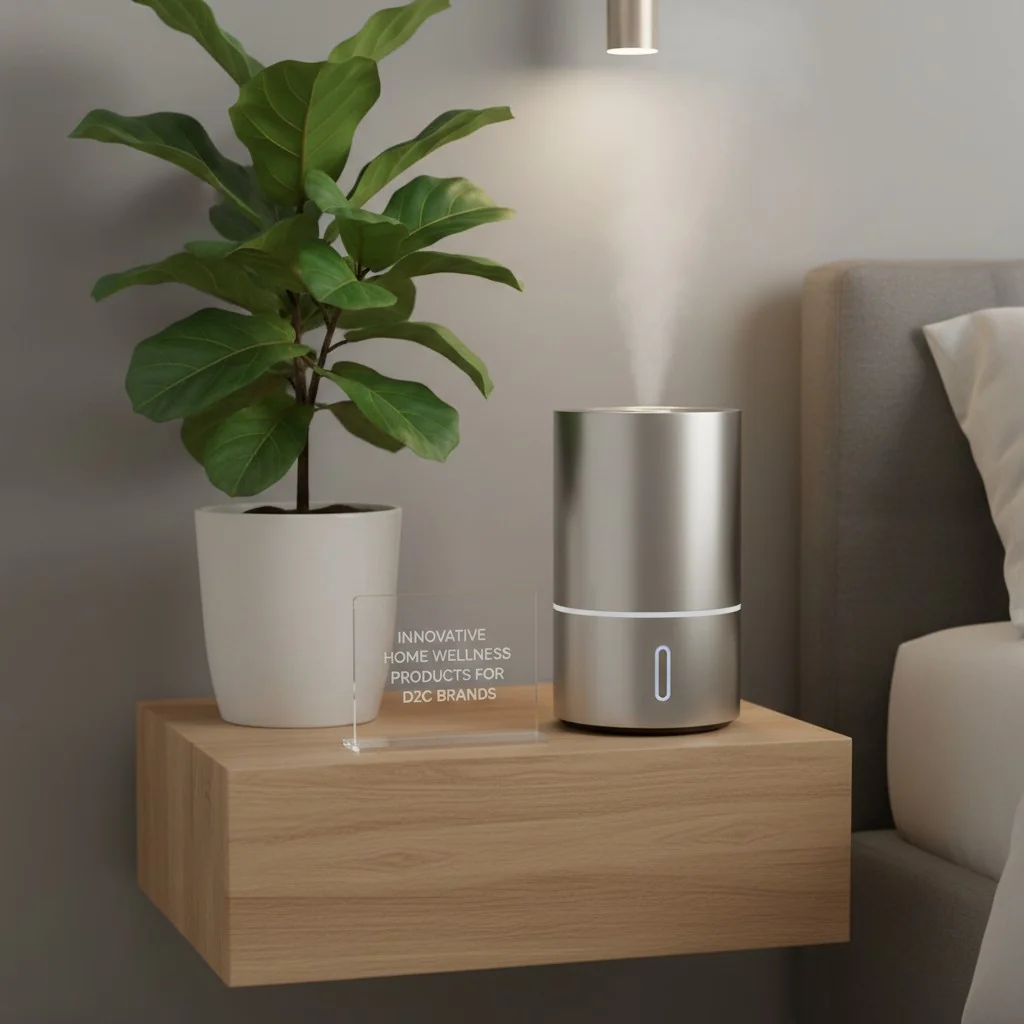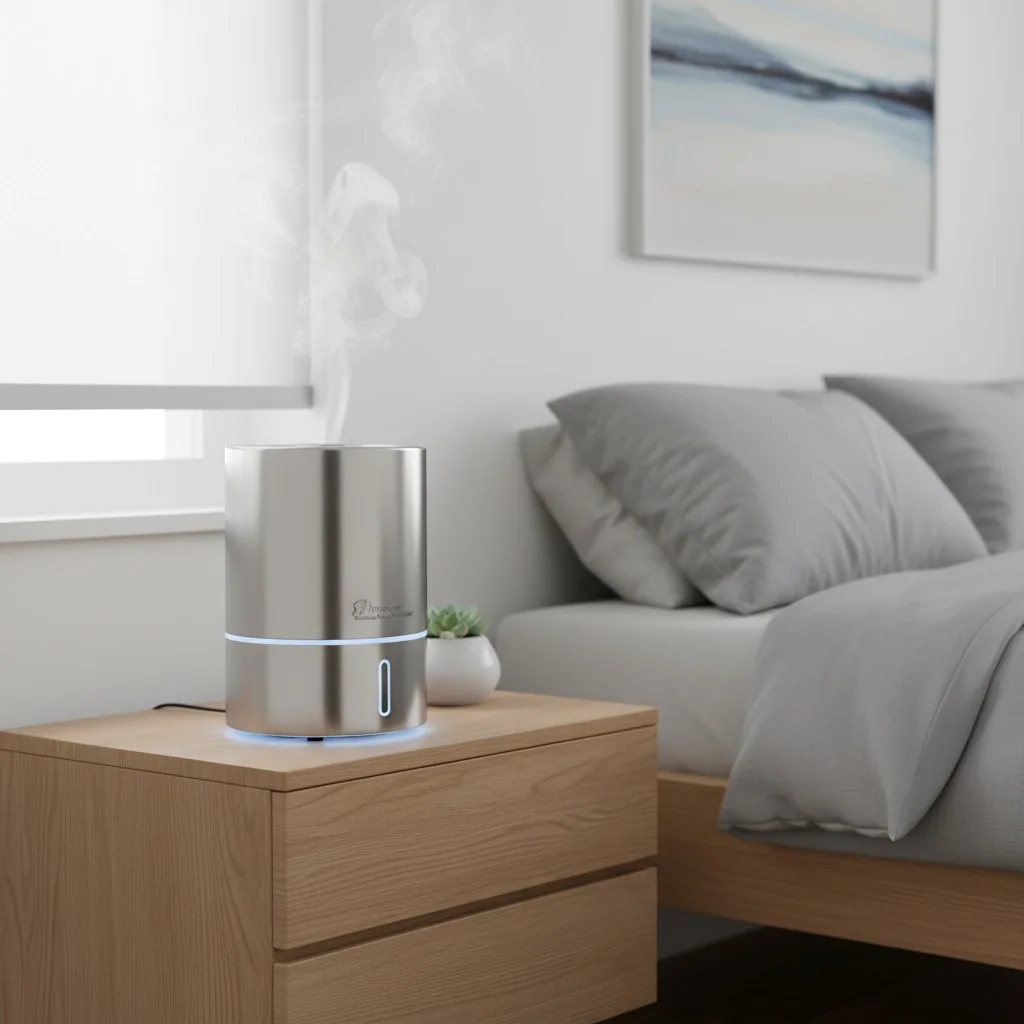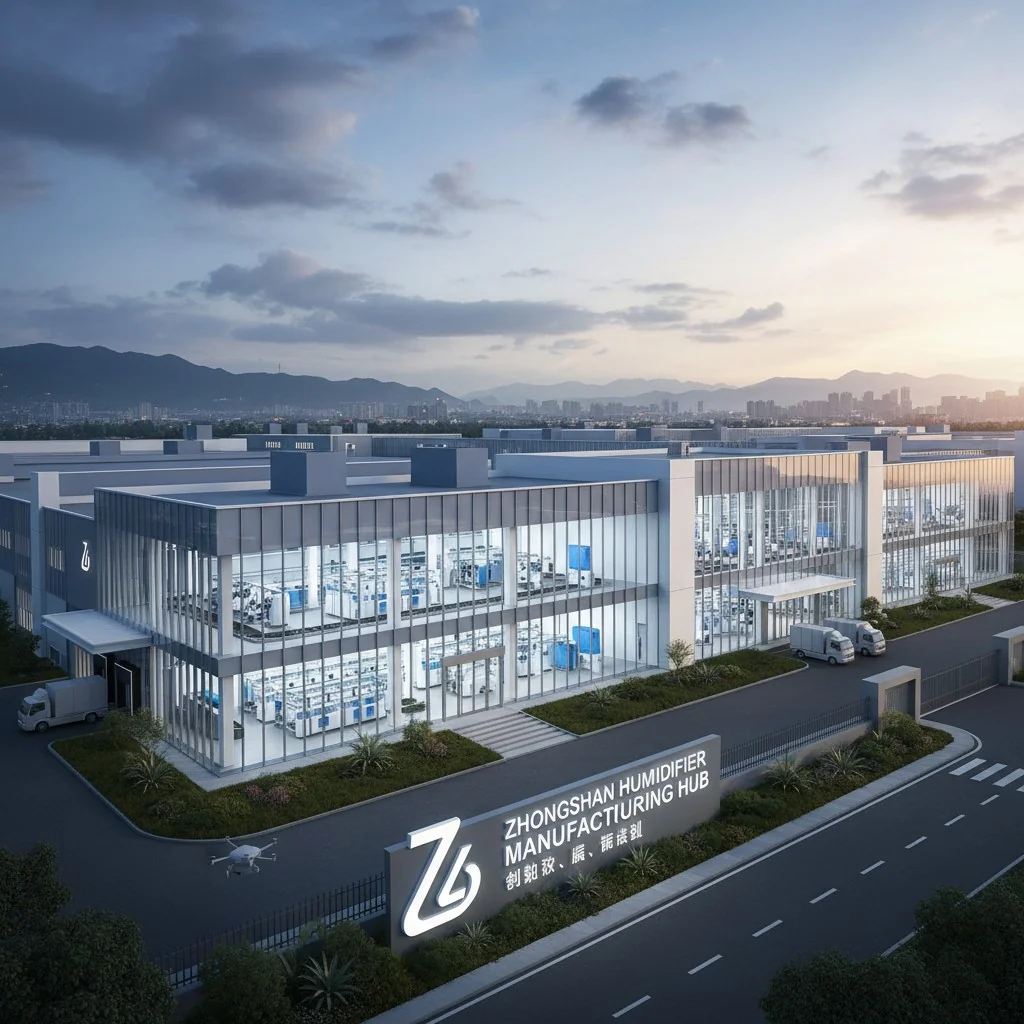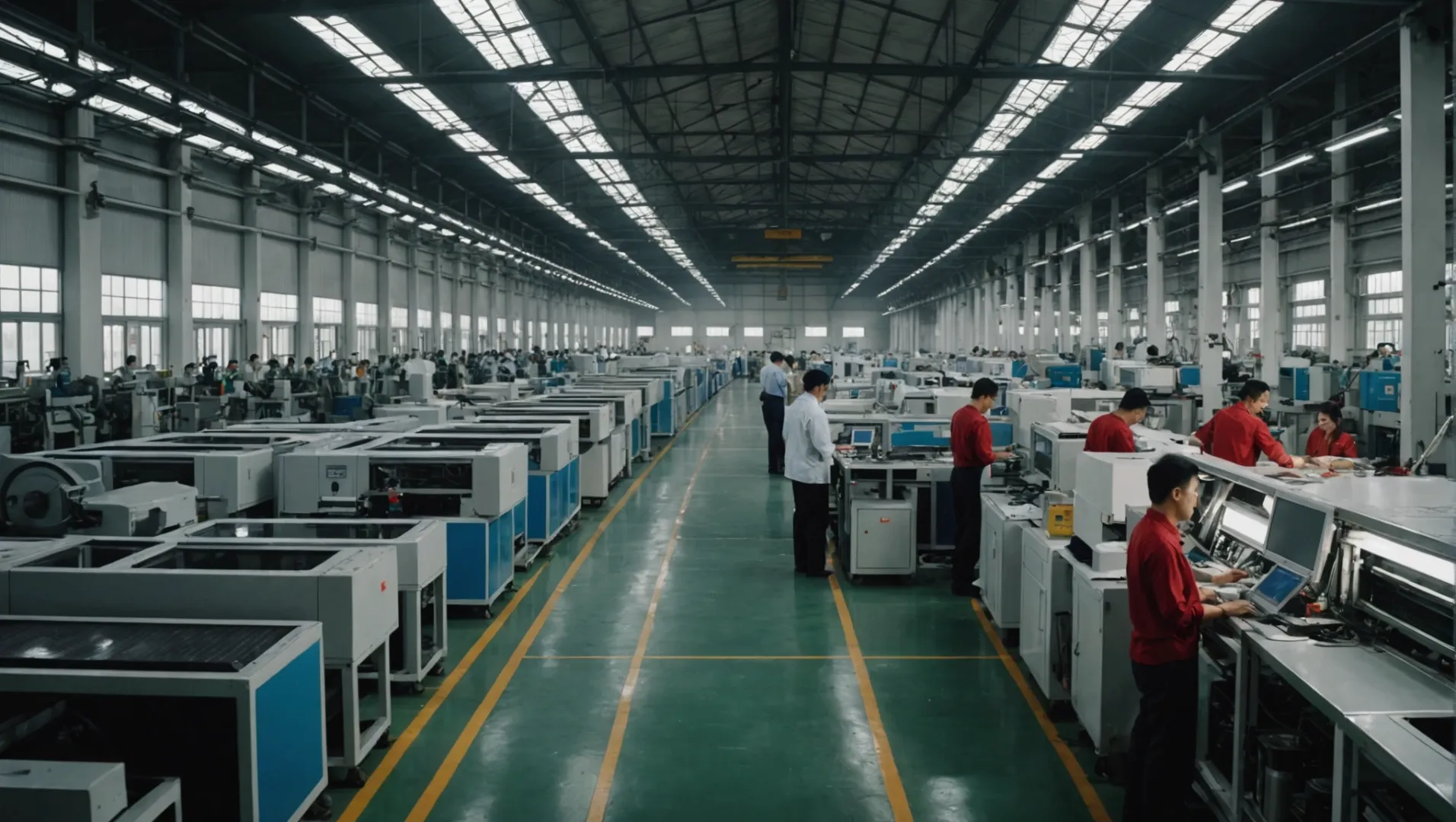
공기청정기의 원산지에 대해 생각해 본 적이 있나요? 신선한 공기에 대한 필요성이 크게 증가하면서 최고의 생산지에 대한 궁금증이 생겼습니다.
중국은 확립된 공급망과 비용 효율성으로 인해 공기청정기 생산의 주요 허브로 남아 있습니다. 그러나 베트남은 변화하는 글로벌 무역 역학 관계 속에서 잠재적인 이점을 제공하며 실행 가능한 대안으로 떠오르고 있습니다.
중국은 공기청정기 생산에 있어 뛰어난 기술과 경험을 보유하고 있지만, 특히 최근 관세 문제와 세계 정치의 변화로 인해 베트남은 흥미로운 선택입니다. 현명한 결론에 도달하려면 각 국가의 제조 세부 사항을 면밀히 살펴보세요.
중국은 베트남보다 공기청정기 생산에 필요한 인건비가 저렴합니다.False
중국은 경제 발전으로 인건비가 상승했지만 베트남은 여전히 낮은 수준입니다.
중국과 베트남에서 제조할 때 비용에 미치는 영향은 무엇인가요?
베트남과 비교하여 중국에서 상품을 생산할 때 발생하는 비용 요소를 이해하는 것은 생산 계획을 개선하려는 기업에게 매우 중요합니다.
중국의 제조 비용은 일반적으로 잘 구축된 공급망으로 인해 더 낮지만, 관세로 인해 비용이 상승할 수 있습니다. 베트남에서는 주로 수입 자재에 의존하기 때문에 초기 비용이 더 높지만, 잠재적인 관세 절감과 향후 인프라 개발로 비용의 균형을 맞출 수 있습니다.
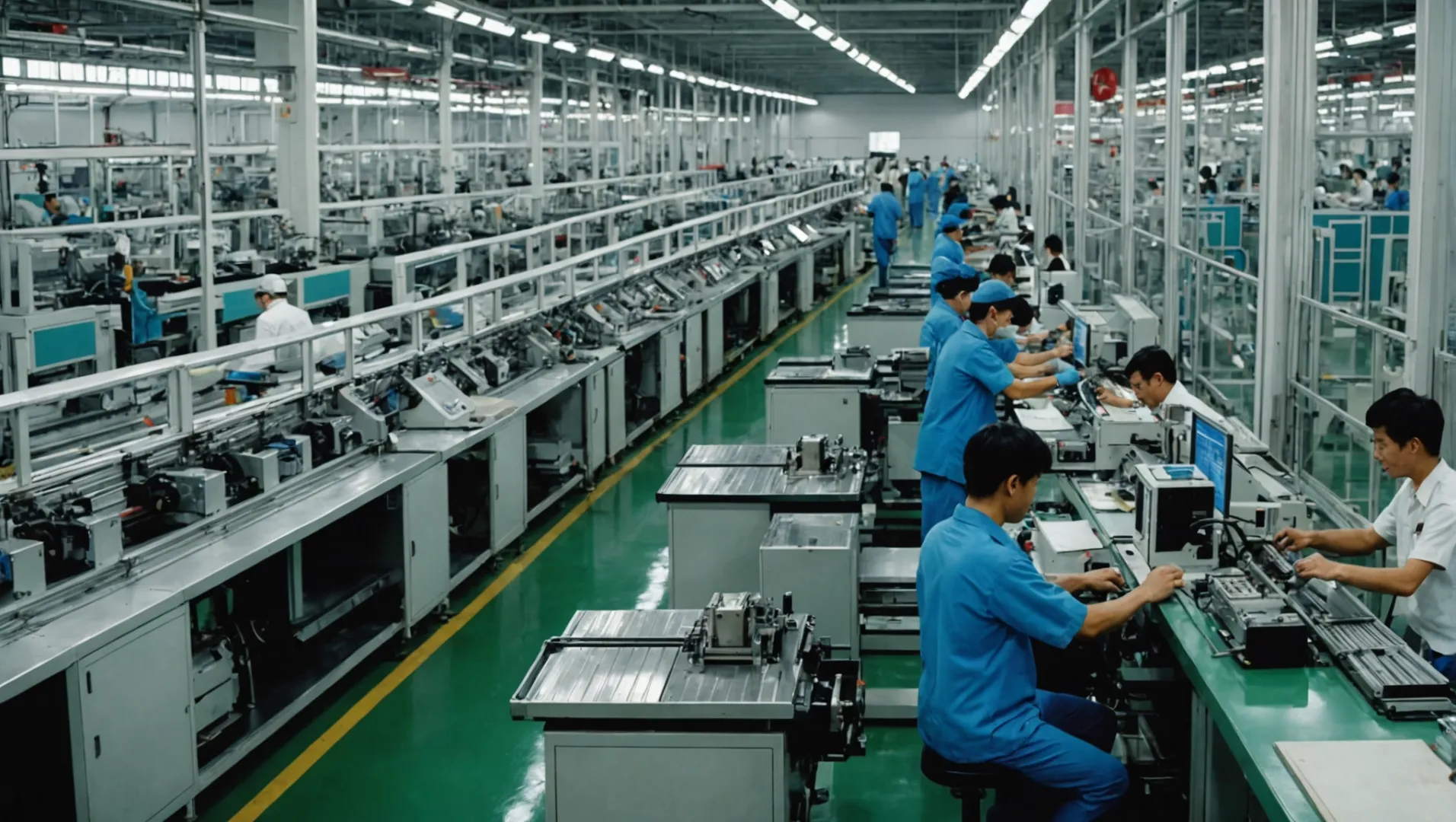
인건비 평가
중국과 베트남의 제조 비용을 살펴볼 때 중요한 요소 중 하나는 인건비입니다. 중국의 경우 경제 성장과 생활 여건 개선으로 임금이 상승했습니다. 그럼에도 불구하고 중국은 전자, 섬유, 공기청정기 등의 분야에서 기술과 제조 경험이 풍부한 근로자를 제공합니다.
반면 베트남은 경제 성장으로 인해 임금 비용이 낮습니다. 따라서 비용을 절감하고자 하는 기업에게는 매력적인 곳입니다. 그러나 단점은 특히 공기청정기 생산과 같은 전문 분야에서 경험이 적은 인력이 많다는 점입니다.
공급망 효율성
중국의 견고한 공급망1 는 원자재와 부품에 쉽게 접근할 수 있는 주요 이점입니다. 이러한 설정은 대기 시간을 단축하고 비용을 절감하여 중국을 제조를 위한 강력한 선택으로 만듭니다.
반면에 베트남의 공급망은 여전히 성장하고 있습니다. 많은 소재와 부품이 중국에서 생산되기 때문에 생산 비용이 높아집니다. 하지만 베트남은 인프라 개선을 위해 많은 비용을 지출하고 있어 향후 공급망이 개선될 수 있습니다.
관세 및 무역 정책 영향
미국과 같은 국가의 중국산 제품에 대한 관세로 인해 많은 기업이 베트남과 같은 옵션을 고려하고 있습니다. 기존 시스템으로 인해 중국에서 생산하는 것이 처음에는 더 저렴해 보일 수 있지만 이러한 관세로 인해 비용이 크게 상승할 수 있습니다.
베트남은 이러한 관세를 피할 수 있는 방법을 제공하여 특정 시장에 판매하는 기업의 비용을 낮출 수 있습니다. 무역 규칙이 변화함에 따라 베트남은 더 매력적인 생산지가 될 수 있습니다.
장기적인 비용 고려 사항
언뜻 보기에 상품을 생산하는 것은 베트남2 는 수입 자재에 의존하고 인프라가 덜 발달되어 있어 비싸게 보일 수 있습니다. 하지만 산업 분야와 공급망에 대한 투자가 증가함에 따라 베트남의 비용 우위는 시간이 지남에 따라 크게 증가할 수 있습니다.
중국의 강점은 기존의 효율성과 전문성에서 비롯되지만, 글로벌 정치가 변화함에 따라 기업들은 베트남으로 생산 기지를 확장하는 것이 유리할 수 있습니다. 이러한 '중국+1' 접근 방식은 기업이 한 국가에 의존하는 리스크를 줄이려는 노력으로 관심을 받고 있습니다.
| 비용 요소 | 중국 | 베트남 |
|---|---|---|
| 인건비 | 더 높지만 숙련된 | 더 낮지만 경험이 적은 |
| 공급망 | 체계적이고 효과적인 | 수입에 의존하는 성장세 |
| 관세 영향 | 무역 문제로 인해 높음 | 관세 회피로 비용 절감 |
| 인프라 | 고급 | 개선하기 |
이러한 점을 고려하면 기업이 공장을 설립할 위치를 현명하게 선택하여 단기적인 비용과 장기적인 전략적 이득의 균형을 맞추는 데 도움이 될 수 있습니다.
베트남의 인건비는 중국보다 높습니다.False
베트남은 경제 성장으로 인해 인건비가 감소하고 있습니다.
중국의 공급망은 베트남보다 더 효율적입니다.True
중국은 강력한 공급 시스템을 유지하여 배송 시간을 단축하고 비용을 절감합니다.
양국의 공급망 인프라는 어떻게 비교될까요?
공기청정기를 생산할 스마트한 장소를 선택하려면 공급망 구성을 파악하는 것이 중요합니다.
중국은 공기청정기 생산을 위한 공급망 인프라가 잘 구축되어 있어 비용 효과와 효율성을 보장합니다. 반면 베트남의 신흥 공급망은 아직 개발 중이며 중국으로부터의 수입에 크게 의존하고 있어 전반적인 생산 비용과 물류에 영향을 미치고 있습니다.
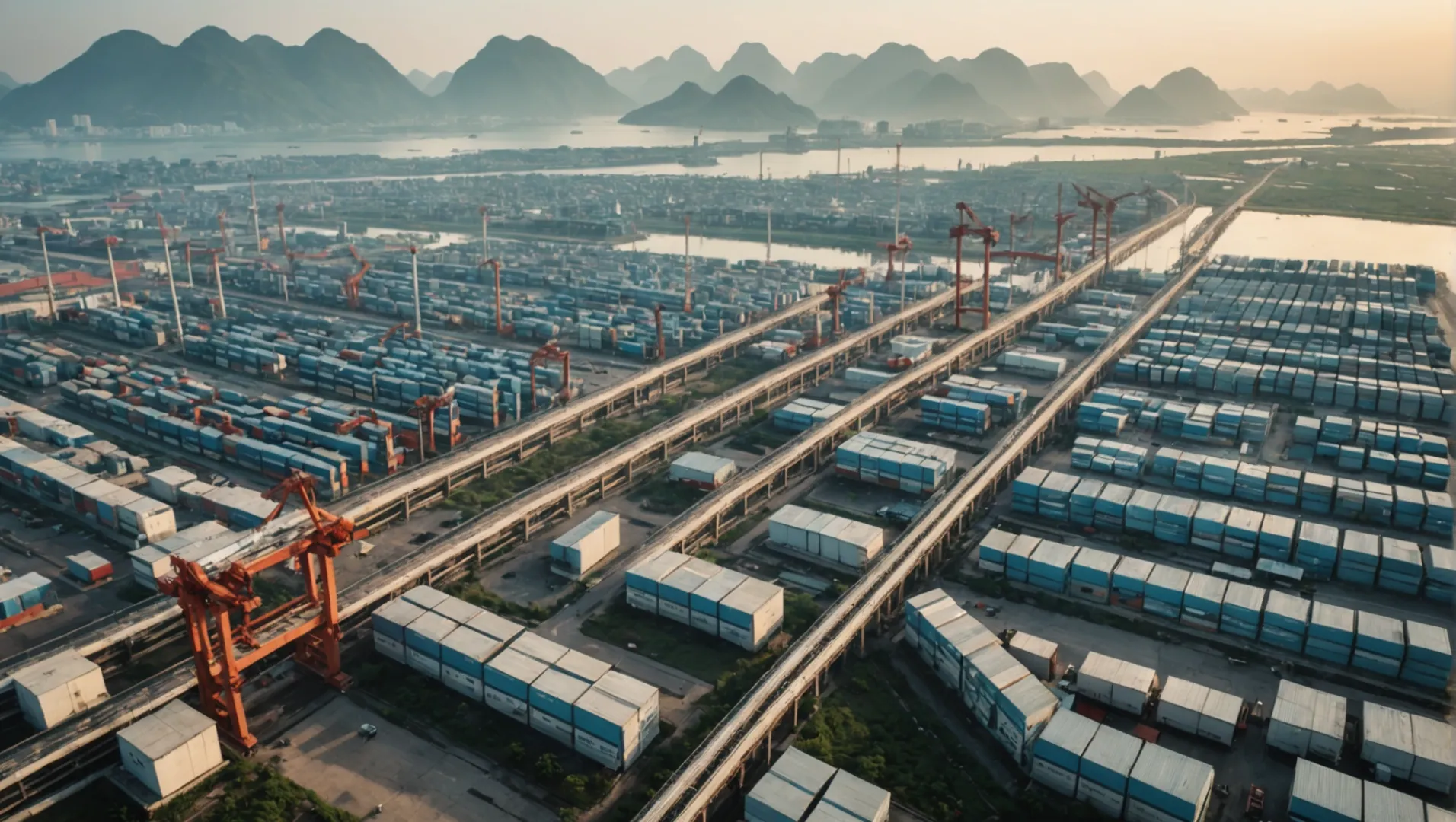
중국 공급망 인프라 개요
중국의 공기청정기 생산 시스템은 광범위한 공급업체와 공장 네트워크로 인해 두드러집니다. 이 시스템은 원자재 조달부터 최종 부품 조립까지 모든 생산 단계를 포괄합니다. 중국 공장은 다음과 같은 이점을 누릴 수 있습니다. 주요 공급업체3를 통해 운송 비용과 대기 시간을 줄일 수 있습니다.
베트남의 발전하는 공급망
베트남은 이제 막 중국과 유사한 공기청정기 공급 시스템을 구축하기 시작했습니다. 현재는 대부분의 자재를 중국에서 들여와야 하기 때문에 비용이 더 많이 들고 대기 시간이 길어집니다. 하지만 베트남의 현지 생산 능력을 키우기 위한 노력도 계속되고 있습니다. 베트남 정부는 궁극적으로 자급자족할 수 있는 강력한 산업 기반을 구축하기 위해 외국인 투자를 유치할 계획을 발표하고 있습니다.
비교 분석: 중국 대 베트남
표: 공급망 인프라의 주요 차이점
| 측면 | 중국 | 베트남 |
|---|---|---|
| 공급 네트워크 | 넓고 잘 정리된 | 성장과 흩어짐 |
| 원자재 소싱 | 현지에서 획득 | 대부분 중국에서 반입 |
| 비용 효율성 | 대규모 생산으로 인해 높음 | 더 낮지만 더 좋아지고 있습니다. |
| 리드 타임 | 짧은 | 수입으로 인해 더 오래 걸림 |
지정학적 요인의 영향
현재 중국과 미국 간의 무역 문제로 인해 많은 기업이 베트남과 같은 곳을 대체 생산지로 고려하고 있습니다. 기업들이 중국에 머물면서 관세 및 정치적 긴장과 관련된 위험을 처리하기 위해 다른 지역으로 확장하는 "중국+1" 아이디어가 자리를 잡아가고 있습니다. 더 많은 기업이 현지 공급망에 투자하기로 결정한다면 이러한 접근 방식은 베트남의 인프라 성장 속도를 높일 수 있습니다.
향후 전망
중국과 베트남의 경쟁이 치열해짐에 따라 각국의 인프라도 변화할 수 있습니다. 중국은 기존 네트워크를 계속 개선하는 반면, 베트남은 다음 사항에 집중할 것입니다. 빌딩 기능4 수입 의존도를 낮추기 위해 노력하고 있습니다. 두 국가 모두 고유한 혜택이 있으므로 기업은 각자의 전략에 따라 이를 고려해야 합니다.
중국의 공기청정기 공급망은 타의 추종을 불허합니다.True
중국에는 광범위한 공급업체 그룹이 있어 비용과 배송 기간을 줄일 수 있습니다.
베트남은 대부분의 공기청정기 부품을 중국에서 수입합니다.True
베트남은 공급망 시스템이 여전히 성장 중이기 때문에 수입에 의존하고 있습니다.
각 나라에서 생산되는 공기청정기의 품질 기준은 어떻게 되나요?
공기청정기는 아마도 중요한 가정용품일 것입니다. 다양한 국가의 품질 기준을 아는 것은 현명한 구매 선택을 위해 매우 중요합니다.
공기청정기의 품질 기준은 전 세계적으로 다양하며, 각 국가의 규제 환경과 업계 관행에 따라 영향을 받는 경우가 많습니다. 중국은 GB/T 18801-2015 표준을 준수하여 효율성과 안전성을 보장하고 있으며, 베트남은 생산 능력이 증가함에 따라 국제적 기대에 부응하기 위해 표준을 조정하고 있습니다.
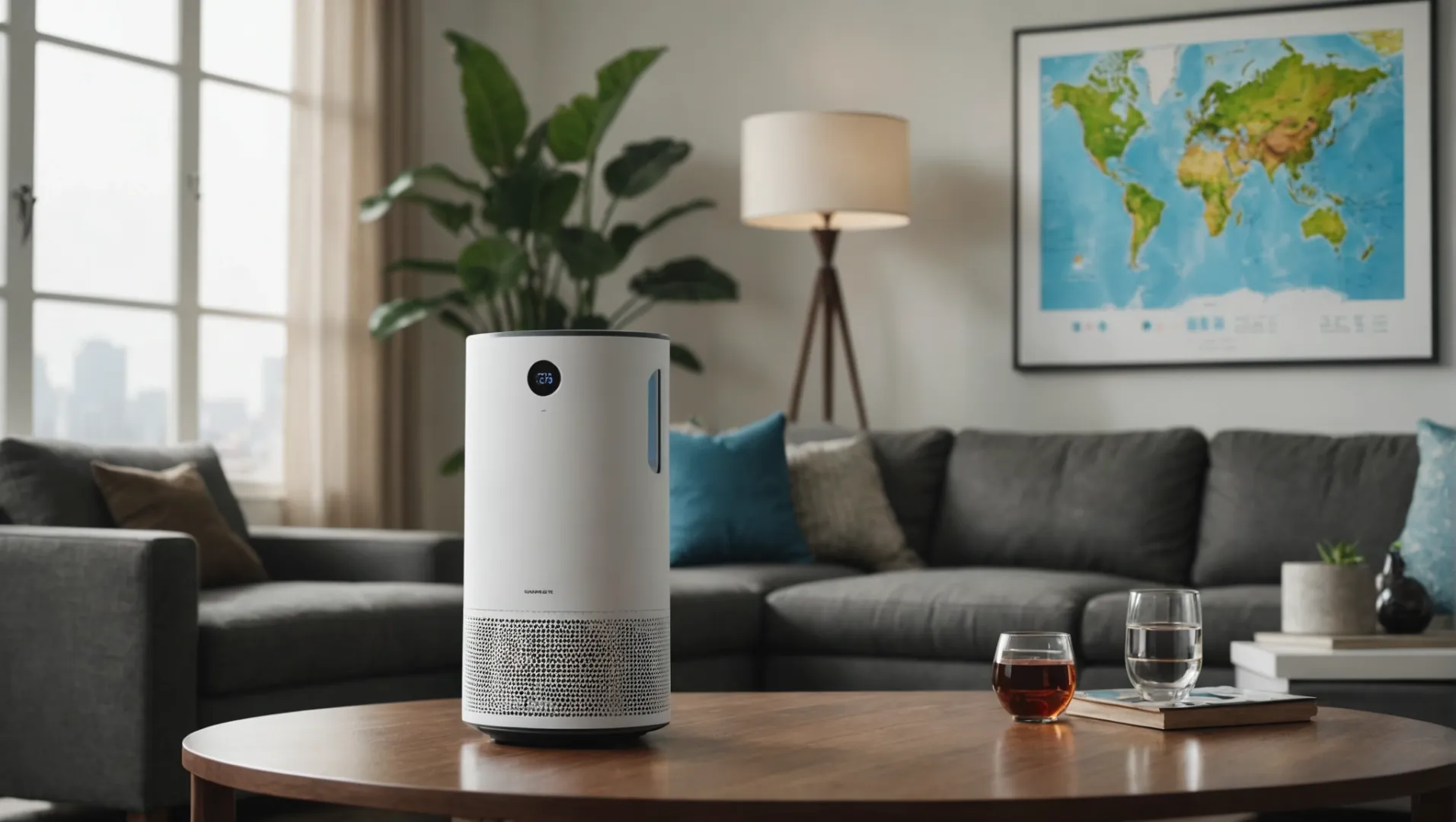
중국의 공기청정기 표준 이해
중국은 GB/T 18801-2015 가이드라인에 기반한 품질 표준을 바탕으로 오랫동안 공기청정기 제조의 선두주자였습니다. 이 표준은 청정 공기 전달률(CADR), 소음 수준 및 에너지 소비량을 측정합니다. 대부분의 중국 제조업체는 이러한 규정을 준수합니다. 엄격한 가이드라인5 제품의 효과와 안전성을 보장하기 위해 노력하고 있습니다.
베트남의 새로운 품질 프레임워크
베트남은 제조 허브로 자리매김하기 위해 공기청정기에 대한 종합적인 품질 표준을 개발하기 위해 노력하고 있습니다. 현재 베트남에는 공기청정기에 대한 자체 국가 표준이 없지만 실내 공기질에 대한 ISO 16000과 같은 국제 벤치마크를 따르고 있습니다. 이러한 접근 방식은 베트남 제조업체가 글로벌 기대치를 충족하는 장치를 생산하는 데 도움이 되지만 현지 표준의 추가 개발이 예상됩니다.
품질 보증 조치 비교
중국은 의무적인 라벨링과 정기적인 규정 준수 점검을 포함한 테스트 및 인증 시스템을 구축한 반면, 베트남은 유사한 인프라를 구축하는 과정에 있습니다. 아래 표는 두 국가 간의 품질 보증 조치의 주요 차이점을 보여줍니다:
| 측면 | 중국 | 베트남 |
|---|---|---|
| 국가 표준 | GB/T 18801-2015 | ISO와 같은 국제 표준 채택 |
| 테스트 시설 | 최첨단 장비를 갖춘 광범위한 시설 | 현대화에 중점을 둔 개발 |
| 규정 준수 모니터링 | 정기 검사 및 감사 | 진행 중 |
품질 표준이 산업에 미치는 영향
중국과 베트남에서 생산되는 공기청정기의 품질에 대한 인식은 확립된 표준과 인프라의 차이로 인해 영향을 받습니다. 글로벌 시장 동향6 는 베트남이 품질 프레임워크를 강화하면 국제 경쟁력을 높일 수 있다고 제안합니다. 그러나 현재로서는 중국의 잘 구축된 시스템이 많은 글로벌 브랜드가 계속 의존하고 있는 신뢰성을 제공합니다.
소비자 고려 사항
소비자는 공기청정기를 선택할 때 이러한 기준을 이해하는 것이 중요합니다. 중국에서 제조된 제품은 기존 규정을 준수하기 때문에 더 신뢰할 수 있는 것으로 인식되는 경우가 많습니다. 한편, 베트남 제품을 고려하는 구매자는 제품 품질을 보장하기 위해 공인된 국제 기관의 인증을 확인해야 합니다.
중국은 공기청정기에 대해 GB/T 18801-2015를 따릅니다.True
중국의 공기청정기는 품질에 대한 GB/T 18801-2015 표준을 따릅니다.
베트남에는 공기청정기에 대한 자체 국가 표준이 있습니다.False
베트남은 이제 자체 규범이 아닌 ISO와 같은 글로벌 규범을 따르고 있습니다.
향후 무역 정책이 공기청정기 생산에 어떤 영향을 미칠까요?
글로벌 무역 규칙이 변화함에 따라 공기청정기 생산업체는 심각한 장애물과 가능성에 직면하고 있습니다. 이러한 영향을 파악하는 것은 신중한 계획을 세우는 데 중요합니다.
향후 무역 정책은 공급망, 제조 비용, 국제 파트너십에 영향을 미쳐 공기청정기 생산을 재편할 수 있습니다. 이러한 변화는 중국에서 베트남으로 전환되는 등 제조 위치의 변화로 이어질 수 있습니다.
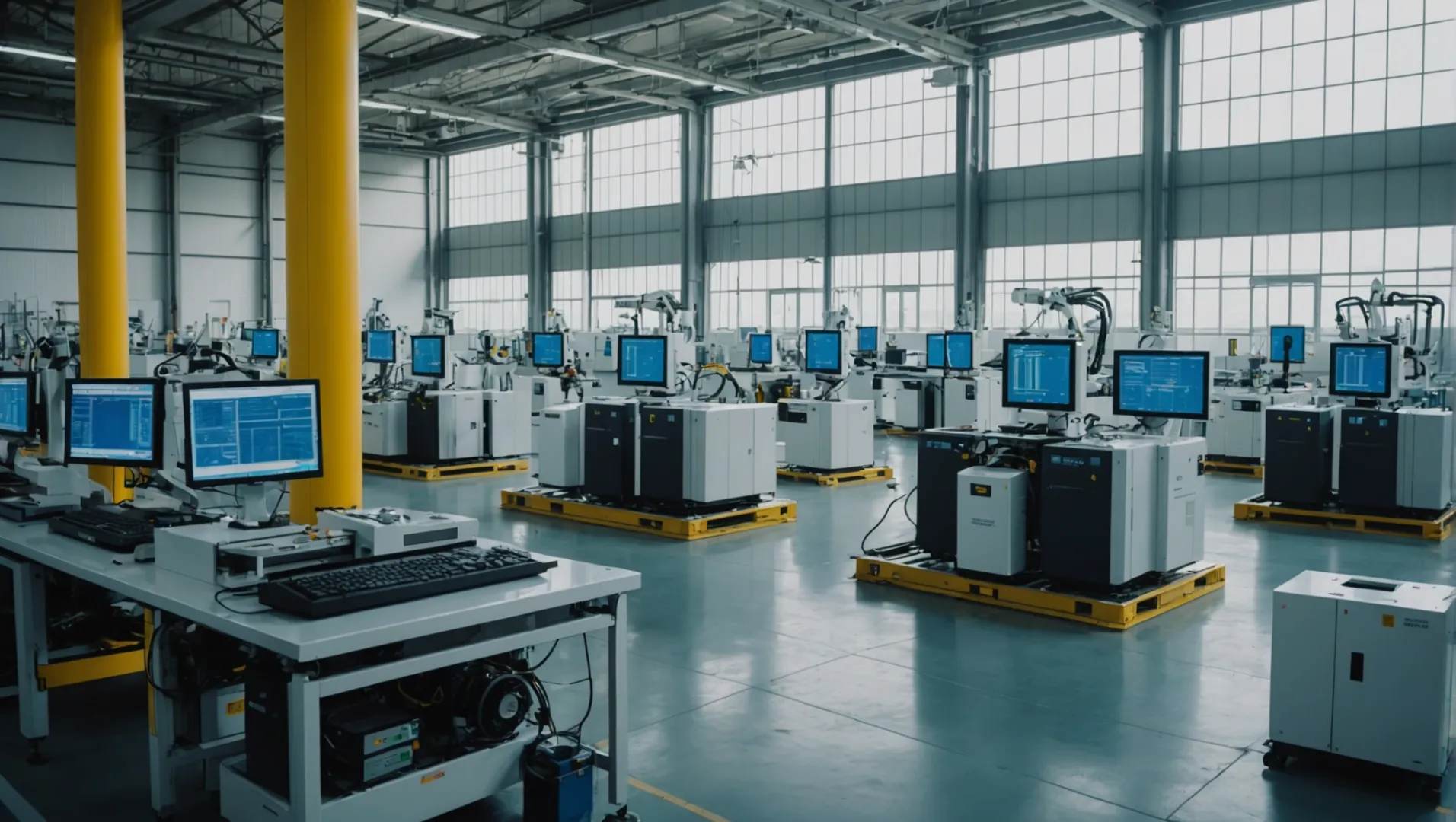
관세 및 무역 협정의 역할
관세 및 무역 거래와 같은 무역 규칙은 공기청정기의 공급처와 공급 방식을 결정합니다. 예를 들어, 트럼프 대통령 시절 미국이 중국산 제품에 관세를 부과하면서 많은 기업이 중국 공장 사용을 재고하게 되었습니다. 이로 인해 기업들은 베트남과 같은 다른 지역으로 눈을 돌리게 되었습니다.
중국 +1 전략
'중국+1' 계획은 관세와 정치적 이슈로 인한 문제를 피하기 위해 중국 이외의 지역으로 생산을 분산하는 것을 의미합니다. 중국은 강력한 공급망을 갖추고 있기 때문에 여전히 공기청정기 생산에서 선두를 달리고 있습니다. 하지만 많은 기업들이 베트남에 공장을 짓기 시작했습니다.
베트남에는 아직 공기청정기에 대한 완전한 공급망이 구축되어 있지 않지만, 향후 무역 규칙이 인프라의 성장을 촉진하여 베트남의 경쟁력을 강화할 수 있습니다. 하지만 초기에는 중국산 자재가 필요하기 때문에 비용이 더 많이 들 수 있습니다.
비용에 미치는 잠재적 영향
| 요인 | 중국 | 베트남 |
|---|---|---|
| 관세 비용 | 높은 잠재적 영향력 | 초기 영향 감소 |
| 공급망 효율성 | 설립 | 개발 |
| 제조 비용 | Lower | 10-15% 더 높음 |
위의 표는 중국과 베트남에서 공기청정기를 생산할 때의 비용 차이를 보여줍니다. 무역 규칙에 따라 이 수치가 달라질 수 있으며, 시간이 지남에 따라 베트남의 비용 부담이 낮아질 수도 있습니다.
지정학적 고려 사항
전 세계의 정치는 무역 규칙을 형성하고, 이는 제조업의 선택에 변화를 가져옵니다. 미국과 중국 간의 지속적인 경쟁은 글로벌 공급 라인에 영향을 미치는 추가적인 규칙 변경을 가져올 수 있습니다. 베트남의 지리적 위치는 기업들이 이러한 변화에 대비할 수 있도록 도와주며, 베트남에 제조 시설을 배치하려는 유혹을 불러일으킬 수 있습니다.
장기적인 업계 동향
앞으로는 무역 규칙에 따라 한 국가에 대한 의존도를 낮추기 위해 현지 생산을 늘리는 방향으로 나아갈 수 있습니다. 이는 새로운 기술에 대한 투자와 공기청정기 산업의 개선으로 이어져 더욱 강력하고 다양한 글로벌 공급망을 구축할 수 있습니다.
요약하면, 중국이 공기청정기 생산에서 여전히 중요한 위치를 차지하더라도 향후 무역 규칙이 업계의 상황을 크게 변화시켜 베트남이 생산의 확실한 옵션이 될 수 있습니다.
중국산 제품에 대한 관세로 인해 공기청정기 비용이 증가합니다.True
관세는 중국 공장에 따라 기업의 비용을 증가시킵니다.
베트남의 공급망은 중국보다 더 효율적입니다.False
중국은 강력한 공급 시스템을 보유하고 있는 반면 베트남은 성장하고 있습니다.
결론
중국과 베트남 중 하나를 선택하는 것은 현재 수요와 미래 계획에 따라 달라집니다. 비용, 공급망 준비, 시장 방향을 평가하여 귀사의 목표에 가장 적합한 국가를 결정하세요.
-
공급망 효율성이 제조 비용에 미치는 영향을 살펴보세요: "이러한 무역 역학으로 인해 베트남의 대중국 무역 적자는 2023년에 1조 4천 5백억 달러로 확대되어 지난 5년 동안 거의 501조 3천억 달러가 증가했습니다."... ↩
-
베트남의 잠재적인 장기적인 비용 이점에 대해 알아보세요: 베트남의 제조업은 베트남의 고성장을 주도해 왔습니다. 이 부문은 베트남의 GDP에 20% 이상을 기여했습니다. ↩
-
중국의 포괄적 인 공기 청정기 공급 네트워크를 살펴보세요 ..: 중국 공기 청정기 시장은 2023 년 25 억 4 천만 달러로 평가되었으며 예측 기간 동안 6.8%의 CAGR로 2029 년까지 37 억 8 천만 달러에이를 것으로 예상됩니다 ... ↩
-
현지 제조 역량을 강화하기 위한 베트남의 전략에 대해 알아보세요: 베트남 공기청정기 시장에서 활동하는 주요 기업으로는 Sharp Electronics (Vietnam) Company Limited, Panasonic Vietnam Co... ↩
-
신뢰할 수 있는 공기청정기를 위한 중국의 확립된 품질 가이드라인을 살펴보세요..: 이 표준은 GB/T 18801-2008 "공기 청정기"를 대체합니다. 이 표준과 GB/T 18801-2008의 주요 기술적 차이점은 다음과 같습니다. ↩
-
새로운 품질 표준에 따라 베트남 시장이 어떻게 진화하고 있는지 알아보세요: 베트남 공기청정기 시장은 필터 유형, 가격대, 판매 채널에 따라 세분화할 수 있습니다. 필터 유형 측면에서 시장은 ... ↩


